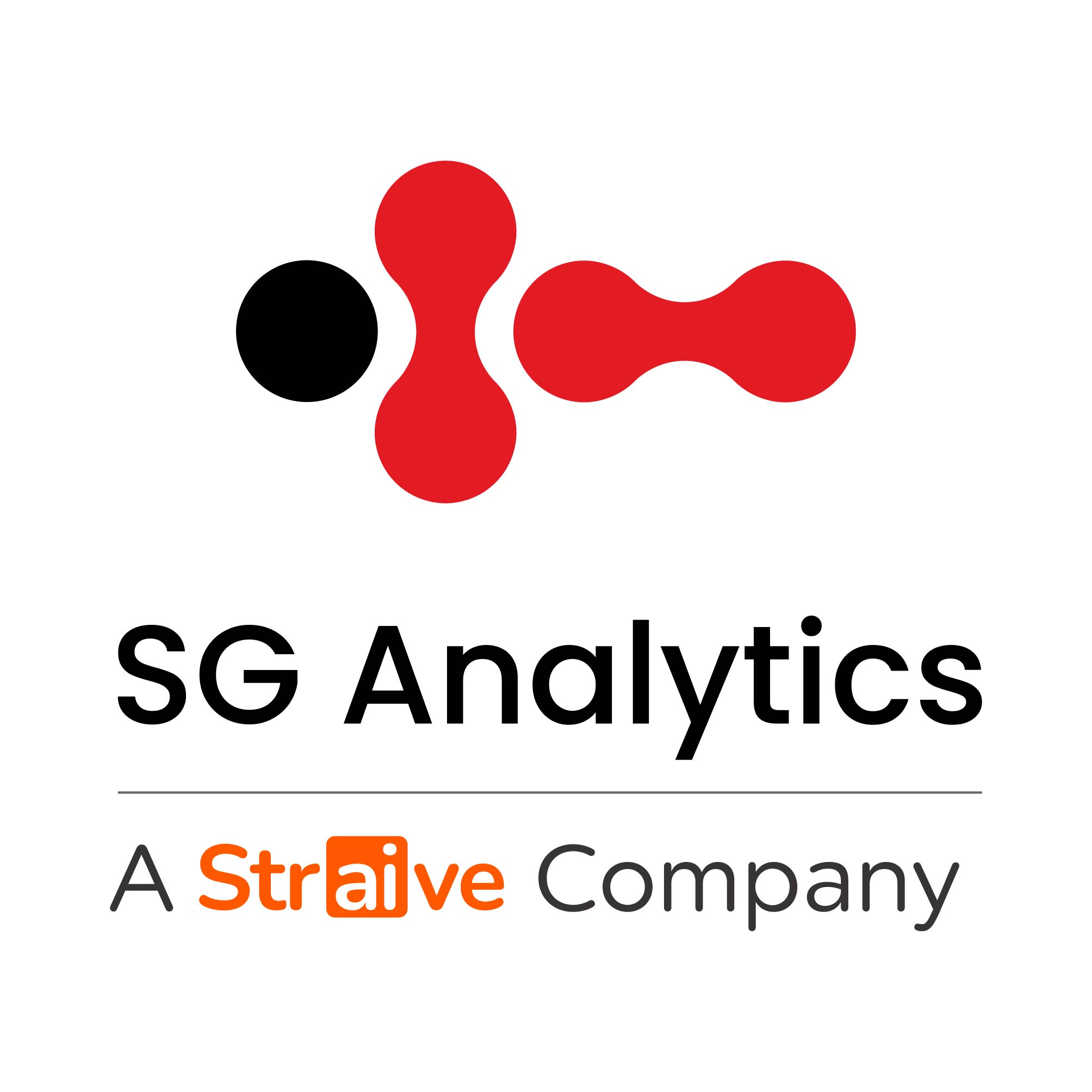Businesses have been facing huge challenges and, at the same time, undergoing an incredible amount of transition over the past few years. And this trend will not slow down in 2025. Businesses are still dealing with the aftermath of the global pandemic, Russia's war on Ukraine, economic challenges, and the ever-faster development of technologies.
Data management is emerging as an expectation in the business world. The world is now embracing informative real-time data visualizations and interactive business dashboards. The world's data is expected to exceed 180 zettabytes by the year 2025 from over 41 billion connected devices.
At the same time, the business intelligence landscape has evolved immensely, impacting the way they work and operate. The exponential growth of data is one of the main drivers for this transition. Companies are no longer wondering about the potential of their data but instead are taking action to explore the existing data and employ possible disparate sources to acquire relevant insights.
Read more: Types of Hybrid Work Models: How are they Reinventing the Future of Work?

Business intelligence (BI) assists companies in collecting, analyzing, and integrating data into their operations to receive valuable insights for business growth. The business intelligence industry, over the years, has morphed into a billion-dollar enterprise. With organizations undergoing digital transformation, business intelligence is finding a significant response in industries.
The upcoming advancements in technology are defining the future of BI, and businesses are bracing themselves to integrate data-driven trends.
Let's Explore the Business Intelligence Trends:
Business Intelligence and Analytics Trends 2025
-
Cloud-based Business Intelligence (BI)
The future growth of business insights and operations will be in the cloud. It is one of the significant reasons why big data is now advancing at a much faster pace. Every business intelligence (BI) element, such as data sources, data analytics and models, data storage, and computing power, are already transitioning to the cloud. Businesses need to integrate a connected cloud strategy that ensures reduced risk and higher flexibility.
Cloud services are considered the biggest trend in BI. Due to the wide adoption of the cloud in remote working, cloud-based business intelligence is making it possible for apps and data to be accessed from any location and at any time. With the rising popularity of the cloud, software-as-a-Service (SaaS) apps are also becoming more popular, as they offer easy access to any web browser, along with providing data insights and answers to any access anytime and on any device.

-
Enhanced Data Quality
Extracting new and valuable insights from business data is critical for businesses to be perceived as fully data-driven enterprises. However, data quality is still one of the most significant challenges faced by data analysts. While good data quality is critical to obtain accurate insights from available data, it is helpful in making the right business decisions. Businesses are now realizing the cost implications of basing their business decisions on poor data quality. Due to this reason, businesses are implementing a Data Quality Management (DQM) policy to guarantee efficient data analysis.
Read more: Debunking the Myths – Does Innovation Holds Back Digital Transformation?
Gartner's recent report stated that by 2022, 70% of organizations would track data quality levels based on different metrics, thus assisting businesses to improve and significantly reduce operational risks and costs.
-
Ethical Defensive Mechanism Artificial Intelligence (AI) on The Rise
There has been a movement in the offensive and defensive developments that are driving artificial intelligence in business operations. Offensive AI indicates developments that are leading to transformation and innovation, thus offering the organization a competitive advantage. On the contrary, defensive AI developments concentrate on cost-savings or compliance.

AI drivers were offensive at 91.7% in 12019 versus 8.3% defensive. Today AI can be integrated to create as well as protect data operations. However, the slew of privacy and security concerns brought about by big data is putting defensive AI developments in the limelight.
-
Data Security
In the business intelligence ecosystem, businesses are integrating defensive AI developments as a form of security. The year 2021 saw a record-breaking number of identity breaches and cyber thefts. The continuous development in proactive analytics is leading business intelligence (BI) to incorporate advanced neural networks to detect system anomalies. This helps to alert system administrators of a potential user breach based on the historical patterns and present context.
-
Ethical AI
Along with beefing system security, ethical AI is now finding a pace in data security. For businesses today, it is not hard to suspect privacy as a major driver for regulatory penalties that are being imposed. Artificial intelligence (AI) developments in BI, while offensive in nature, are assisting businesses with hyper-automation, system engineering, and big data analytics. These technologies are now shaping and equipping top business intelligence systems with efficiency, productivity, and profitability.
Read more: Why Investing in Employees Enables Better Business Results?

-
Collaborative Business Intelligence (BI)
Over the last few years, AI-driven robots have been replacing humans and their jobs. However, this has led to massive unemployment. Manufacturing units in the US (United States) were robust at 12.5 million employees in 2021, the third-largest employment by every industry. However, instead of bumping us off the factory floor, this next-generation army of robots is enabling businesses to shape up and be excellent colleagues to humans.
Robots are helping to focus on repetitive tasks that no longer require human assistance. The evolving business intelligence framework is being built on the Internet of Things, AI, and analytics, enabling companies to process their operations with greater depth and precision. Manufacturers are pushing toward collaborative production, which equips them with real-time decision-making and predictive maintenance and optimization. Businesses are now integrating higher-level tasks such as strategy, management, and design with collaborative business intelligence (BI).

-
Integration of Augmented Analytics with Business Intelligence
A key component of the data future, augmented analytics is a disruptive trend that leverages machine automation and artificial intelligence (AI). It is transforming the ways businesses prepare data, generate insights, and operationalize data and machine learning (ML) frameworks.
By the year 2025, data stories will emerge as the most widespread way to consume insights. Augmented analytics coupled with business intelligence is assisting in generating 75% of those stories. Gartner predicted that augmented analytics solutions would allow non-technical people to create a sophisticated data analytics framework to draw deeper insights.
Augmented analytics is enabling the use of tech like machine learning (ML) and artificial intelligence (AI) to assist with data insight generation and explanation. It is augmenting businesses to explore and analyze data in analytics and business intelligence platforms.
Read more: The Next Tech Time Warp: How Will Artificial Intelligence Possibly Change the World?

Final Thoughts – Business Intelligence Trends
With industries growing fast, the amount of information is also rising. Organizations are continuously generating data volumes as data speed, variety, and complexity are also increasing. But only companies that know how to handle and use data properly can find insights and create profit.
In 2022, companies were working to place themselves for the long term by addressing the root causes of the problems, including data quality, to create a holistic data-driven culture. With data management becoming a more crucial factor, data discovery and visualization are also becoming necessary for organizations.
Summary – Business Intelligence Trends
Business intelligence (BI) converges business analytics, data visualization, data tools, data mining, and infrastructure to help organizations make data-driven decisions. These business intelligence trends are assisting them to help prepare for a more hyper-scale and data-driven global market in the years to come. However, this does not indicate that fewer companies will use business intelligence tools in the coming years. In fact, the opposite is true. Business intelligence is being integrated into organizations' everyday processes as they are seeing a steady rise in the average spend per employee over the years.
With the business intelligence landscape ever-evolving, the future of business intelligence will guide businesses and help them keep an eye on upcoming opportunities.
About SG Analytics
With a presence in New York, San Francisco, Austin, Seattle, Toronto, London, Zurich, Pune, Bengaluru, and Hyderabad, SG Analytics, a pioneer in Research and Analytics, offers tailor-made services to enterprises worldwide.
A leader in Market research services, SG Analytics enables organizations to achieve actionable insights into products, technology, customers, competition, and the marketplace to make insight-driven decisions. Contact us today if you are an enterprise looking to make critical data-driven decisions to prompt accelerated growth and breakthrough performance.

